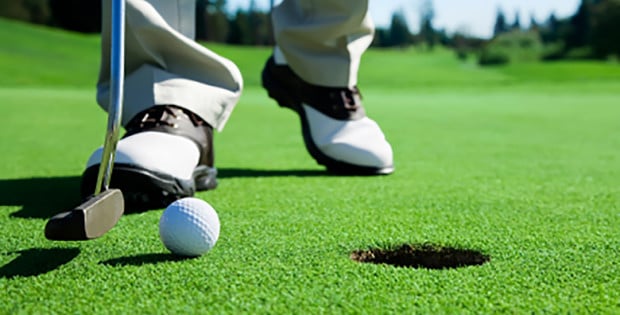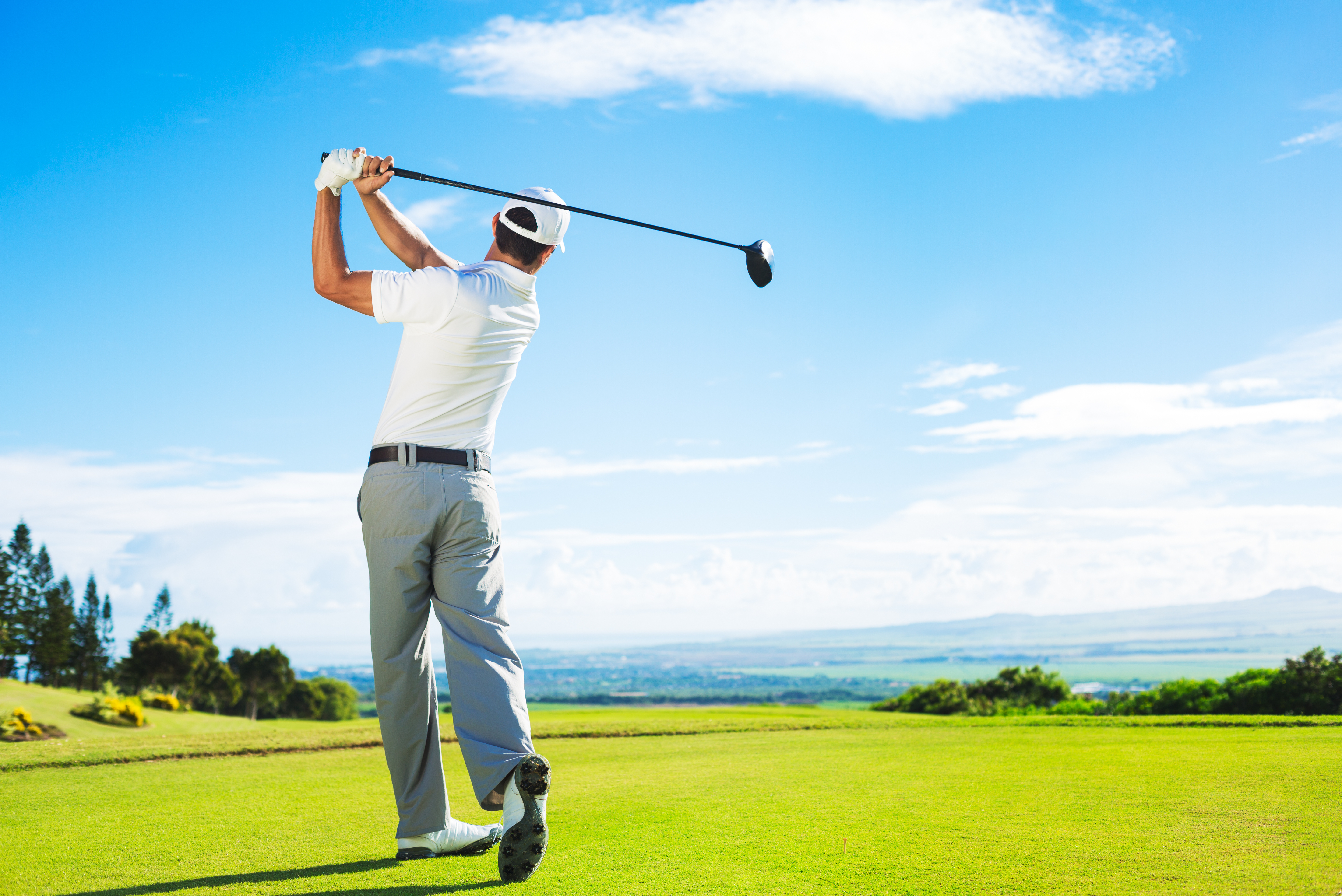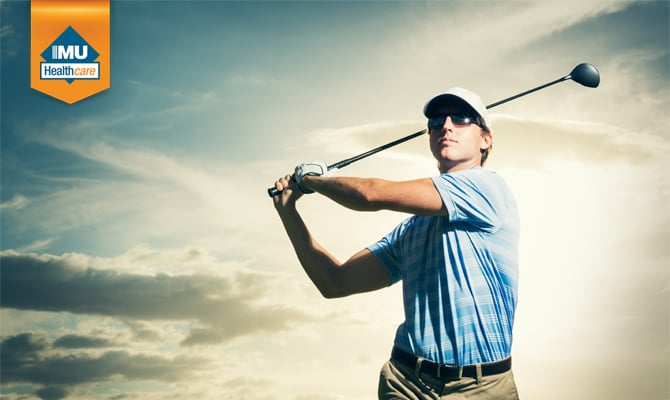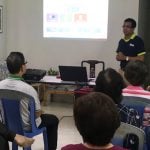Golfers love their golf games: fact. But as avid as these millions of men and women (about 20 percent of the adult population in any country play golf!) might be, they need to be aware of some common foot problems and potential risks and injuries often associated with those who trek the fairways and greens. Foot and ankle injuries can come about through incidental, traumatic events, but they are equally likely to happen from overuse. Before we identify some of the ailments or injuries, let’s try and understand why golfers find themselves with these conditions over time. The golf swing is considered one of the most difficult sporting motions to execute. It needs good stance, posture and grip.
However, because of the various positions involved (the set-up, the backswing, the forward swing and the follow-through) there is a weight transfer in several directions (from front to back, from one side to the other, and so on). Various parts of the body have to work in synchrony for a good swing to be achieved. The shoe/ground interface is also vital for a golfer to perform these specialised swings.
Due to the centrifugal force of the club, the magnitude of the force of the foot pushing on the ground (and the ground pushing back up on the foot) is often greater than the body weight of the golfer himself. The magnitude of the force can be 1.6 times greater than the body weight of the golfer. That is how much force is pushing your foot when you are preparing and executing your swing. Golfers also need to consider torque. Torque is the tendency of a force to rotate an object. Where force is a push or a pull, torque is more like a twist. So on top of the eight kilometre (or more) walk that golfers normally undertake during a game, they also put their feet and legs under considerable stress during each swing. During a golf swing the body acts as a whip. The feet push against the ground, the foot pivots and the hips rotate around a fixed leg position. Each foot moves differently during a golf swing. A golfer’s feet will be subject to weight shifts, rolling to the inside or back and the heel coming off the ground, among others. When these movements are repeated once a week over a period of decades, various golf-related injuries and ailments will begin to surface.
Add to the fact that golfers walk long distances over uneven terrain, sometimes carrying their heavy golf bags, and you can imagine the stress that their feet can undergo.
Signs and Symptoms Some of the common injuries for golfers include knee problems, when there is inflammation or pain caused by the twisting motion involved in the sport. When there is knee pain, rest is the best medicine. Shin pain is also commonly experienced by golfers, more often than not caused by excessive walking after a period of inactivity or poor footwear choices.  Frequently-experienced problems and conditions associated with golfing, as far as the feet are concerned, are heel pain, metatarsalgia, Morton’s neuroma and tendonitis. Heel pain can also be referred to as plantar fasciitis, and can be caused by overuse, incorrect / ill-fitting footwear or even obesity. Golfers are known to experience this pain when getting up first thing in the morning and getting up after periods of rest. Metatarsalgia is the term for the pain experienced in the fore foot region (the balls of the feet). It can also be caused by the presence of corns, hard skin or pain in the bones. Morton’s neuroma refers to the inflammation of the neuroma impinging on the nerve in between the long bones at the sole of the foot. Golfers often find this painful when they are walking on the fairway in their golf cleats. Tendonitis on the other hand is the inflammation of the tendon that runs along the lower leg. Prevention and Treatment Injury risk can be reduced by playing less than four rounds a week, though no avid golfer will agree to this. Golfers can also minimise injury and avoid exacerbating existing injuries by opting to use a golf cart or trolley instead of carrying their golf bags themselves. For those who have biomechanical issues, custom made insoles prescribed by a podiatrist can help evenly redistribute weight and correct body posture, which is especially important in sport. In a study, 71 percent of participants reported that when they used orthotics while playing golf, their balance was vastly improved. They can help you avoid or lessen the impact of problems from pronation (rolling in) or supination (rolling out). Orthoses help the feet function the way they are ideally supposed to by reducing the possibility of injury brought about by biomechanical imbalances. Orthoses are also said to help with tendonitis or other strains as they equalise the weight load on the lower extremities and so, can reduce the strain on overused muscles.
Frequently-experienced problems and conditions associated with golfing, as far as the feet are concerned, are heel pain, metatarsalgia, Morton’s neuroma and tendonitis. Heel pain can also be referred to as plantar fasciitis, and can be caused by overuse, incorrect / ill-fitting footwear or even obesity. Golfers are known to experience this pain when getting up first thing in the morning and getting up after periods of rest. Metatarsalgia is the term for the pain experienced in the fore foot region (the balls of the feet). It can also be caused by the presence of corns, hard skin or pain in the bones. Morton’s neuroma refers to the inflammation of the neuroma impinging on the nerve in between the long bones at the sole of the foot. Golfers often find this painful when they are walking on the fairway in their golf cleats. Tendonitis on the other hand is the inflammation of the tendon that runs along the lower leg. Prevention and Treatment Injury risk can be reduced by playing less than four rounds a week, though no avid golfer will agree to this. Golfers can also minimise injury and avoid exacerbating existing injuries by opting to use a golf cart or trolley instead of carrying their golf bags themselves. For those who have biomechanical issues, custom made insoles prescribed by a podiatrist can help evenly redistribute weight and correct body posture, which is especially important in sport. In a study, 71 percent of participants reported that when they used orthotics while playing golf, their balance was vastly improved. They can help you avoid or lessen the impact of problems from pronation (rolling in) or supination (rolling out). Orthoses help the feet function the way they are ideally supposed to by reducing the possibility of injury brought about by biomechanical imbalances. Orthoses are also said to help with tendonitis or other strains as they equalise the weight load on the lower extremities and so, can reduce the strain on overused muscles.  A podiatrist can advise on the importance of wearing appropriate shoes. Previous versions of golfing shoes resembled wing-tip oxfords with spikes. Nowadays golfing shoes have evolved to include strengthening and supportive embellishments that make them light yet strong. Improper footwear can also cause blisters and corn formation. Morton’s neuroma is a painful condition, also referred to as a ‘pinched nerve’ or a nerve tumour commonly experienced by golfers. It brings on pain, a burning sensation, tingling, or numbness between the toes and in the ball of the foot. When neuromas occur, it is always best to see a podiatrist for proper treatment. When buying new golf shoes, try them on in the afternoon when your feet are slightly swollen. When you try on new shoes at the store, tie both shoes tightly and walk around the store for a few minutes before you buy them. Also, try on new shoes wearing the same pair of socks that you would wear if you were on the course. Your feet should not hurt after one round of golf. If they do, and the pain persists after the second or third round, you should consult your podiatrist as there can be cause for investigation. The importance of having properly-fitting shoes cannot be emphasised enough. There are also stretching exercises that can be specifically prescribed by a sports medicine professional. These stretching exercises can greatly help to alleviate stiffness after a round of golf and should be carried out prior to exercise to prevent injury.
A podiatrist can advise on the importance of wearing appropriate shoes. Previous versions of golfing shoes resembled wing-tip oxfords with spikes. Nowadays golfing shoes have evolved to include strengthening and supportive embellishments that make them light yet strong. Improper footwear can also cause blisters and corn formation. Morton’s neuroma is a painful condition, also referred to as a ‘pinched nerve’ or a nerve tumour commonly experienced by golfers. It brings on pain, a burning sensation, tingling, or numbness between the toes and in the ball of the foot. When neuromas occur, it is always best to see a podiatrist for proper treatment. When buying new golf shoes, try them on in the afternoon when your feet are slightly swollen. When you try on new shoes at the store, tie both shoes tightly and walk around the store for a few minutes before you buy them. Also, try on new shoes wearing the same pair of socks that you would wear if you were on the course. Your feet should not hurt after one round of golf. If they do, and the pain persists after the second or third round, you should consult your podiatrist as there can be cause for investigation. The importance of having properly-fitting shoes cannot be emphasised enough. There are also stretching exercises that can be specifically prescribed by a sports medicine professional. These stretching exercises can greatly help to alleviate stiffness after a round of golf and should be carried out prior to exercise to prevent injury.
As golfing great Nicklaus is said to have quipped, having lively feet is a good start for a successful game of golf.
This article is brought to you by IMU Healthcare.











Santos Krieser
It is really a great and useful piece of info. I am glad that you shared this useful information with us. Please keep us informed like this. Thanks for sharing.